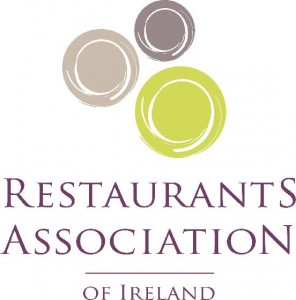29 September 2015
By Bryan T. Smyth
bryan@TheCork.ie
According to a report published by the Restaurants Association of Ireland, 2,520 new jobs in the Food, Tourism and Hospitality sectors have been created in Cork since the reduced VAT rate of 9% was introduced in July 2011.
Speaking about the launch of the Report and the success of the reduced VAT rate, Adrian Cummins, Chief Executive of the Restaurants Association of Ireland, said that “As this report proves, in terms of creating new jobs in the food and accommodation sector, the introduction of the new VAT rate in July 2011 has been a major driver of local employment growth. 2,520 new direct jobs have been created in Cork alone, with 22,300 new direct jobs created across the whole country.”
“This is a very conservative estimate and does not include the number of indirect jobs created in the wider economy as a result of the multiplier effect. When the multiplier effect is included, the total number of new jobs is even more impressive, with 3679 jobs created in Cork and 32,558 jobs created nationally.” continued Adrian Cummins, Chief Executive of the Restaurants Association of Ireland.
The Report entitled “9% VAT – Food, Tourism & Jobs – Rebuilding Ireland’s Economy” uses national employment data from the Central Statistics Office. The Report examines the impact of the introduction of the new VAT rate in July 2011, when it was reduced from 13.5% to 9% for tourism related services and goods.
The Report covers the direct and indirect number of jobs created, an estimate of social welfare savings as well as the increase in revenue for the Exchequer (e.g. PAYE, USC and PRSI Employer contribution) at a county and national level.
Key Findings from the report include:
The number employed in the Accommodation & Food Services sector in Q2 2015 stood at 136,700:
- The gross annual wage bill paid to those employees is €3.17 billion;
- The net annual wage bill paid to those workers is €2.86 billion;
- The total contribution to the Exchequer through payroll taxes is €651 million;
comprising €310 million from employee taxes (PAYE & USC)
and €341 million from Employer PRSI contributions;
The increase in direct employment in the Accommodation & Food Services sector between Q2 2011 and Q2 2015 was 22,300;
- The gross annual wage paid to those extra workers is €517 million;
- The net annual wage bill paid to those extra workers is €466 million;
- The total contribution to the Exchequer through payroll taxes on the increased direct employment is €106million; comprising €51 million from employee taxes (PAYE & USC) and €55 million from Employer PRSI contributions; and
- The reduction in social welfare payments, assuming the extra employment took people off the Live Register, is estimated at €446 million.
Number of Indirect Jobs:
If the multiplier effect of 0.46 is applied to jobs in the Accommodation & Food Services sector;
The extra 2,520 jobs created in the sector between Q2 2011 and Q2 2015 resulted in the creation of an extra 1159 indirect jobs in the wider economy; and
The total direct and indirect increase in employment between Q2 2011 and Q1 2015 was 3679.
Estimated Social Welfare Savings:
The Report demonstrates the considerable social welfare savings made by Exchequer using the model that “for every 10,000 people off the live register, and back in employment, it results in a net gain to the Exchequer of some €200 million”.
The increase in direct employment of 2,520 in the Food & Accommodation sector in Kildare saved the Exchequer €73.6 million in social welfare payments.
Ireland’s Value for Money Rating Rises
On a national scale, tourism has also increased every year since the new VAT rate was introduced, with overall visits to Ireland rising by almost 30% since July 2011. There is further good news for Ireland’s tourism sector regarding Ireland’s Value for Money (VFM) rating as the number of visitors rating Ireland ‘good’ or ‘very good’ VFM has increased from 28% to 40% from 2009 to 2012 and the number of visitors rating Ireland ‘very poor’ or ‘poor’ for VFM has fallen sharply from 40% in 2009 to 16% in 2012.


